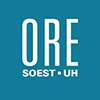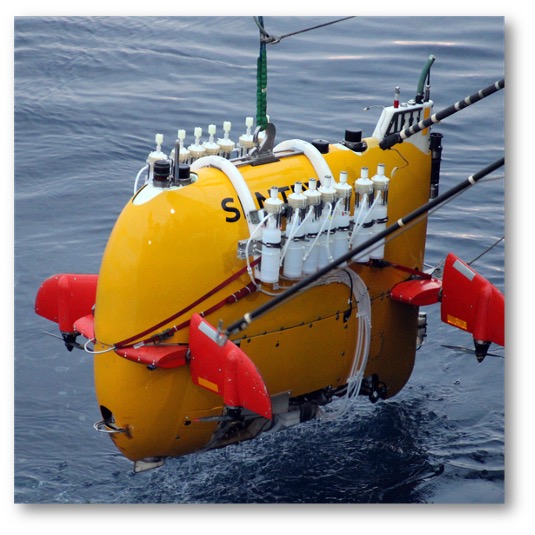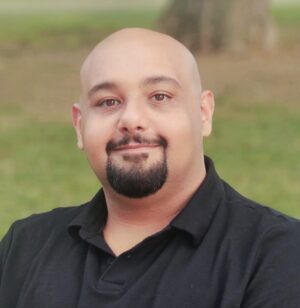To subscribe to the ORE seminar mailing list, click here.
For a (working draft) list of upcoming seminars, click here.
If you are interested in giving an ORE seminar, please contact us at nosal [at] hawaii [dot] edu.
Seminar
Seminar: Apra Harbor Improvement Project Part 2
Clara Encke, Elizabeth Hauschild, Jomphol Lamoonkit, Will Robert, Merritt Shepherd, Guilherme Silva, Bethany Stafford, and Charlotte White ORE 783 Capstone Design Department of Ocean & Resources Engineering University of Hawai‘i at Mānoa Location Information **This seminar will be held both in person (Bilger Hall 150) and over Zoom** https://hawaii.zoom.us/j/95081858686 Meeting ID: 950 8185 8686 Passcode: OREseminar Students in the ORE 783 Capstone class have been working on the Apra Harbor Improvement Project. Apra Harbor is an economic and military hub located on the west coast of Guam. The current configuration of Apra Harbor does not provide adequate wave protection to
Seminar: Numerical wave modeling for Pacific Islands
Bilger Hall 150 2545 McCarthy Mall, Honolulu, HI, United StatesNing Li Ocean Wave Model Systems Specialist Department of Ocean and Resources Engineering University of Hawaii at Manoa Location Information **This seminar will be held both in person (Bilger Hall 150) and over Zoom** https://hawaii.zoom.us/j/95081858686 Meeting ID: 950 8185 8686 Passcode: OREseminar Hawaii is typical of most Pacific Islands with a complex wave climate containing a mix of persistent trade wind seas, year-round south swells, seasonal north swells, and storm waves from subtropical and tropical cyclones passing nearby. The steep volcanic islands modulate the wind fields to create regional wave patterns with large spatial variation. Wave-rider buoys were installed around
Seminar: Observing the Ocean and Earth with SMART Subsea Cables: SMART Atlantic CAM
Bilger Hall 150 2545 McCarthy Mall, Honolulu, HI, United StatesFernando Carrilho Division of Geophysics, Portuguese Institute for Sea and Atmosphere Jose Barros Telecommunications Consulting Bruce Howe Ocean and Resources Engineering, University of Hawaii at Manoa Location Information **This seminar will be held both in person (Bilger Hall 150) and over Zoom** https://hawaii.zoom.us/j/95081858686 Meeting ID: 950 8185 8686 Passcode: OREseminar The ocean is key to understanding climate change, sea level rise, ocean warming, tsunamis, and earthquakes. Because the ocean is difficult and costly to monitor, we lack fundamental data needed to adequately model, understand, and address these threats. Science Monitoring And Reliable Telecommunications (SMART) Cables is working to integrate sensors
Seminar: WVNet: A SAR Foundational Model with Applications for Air-sea Interaction Research
Marine Science Building 100 1000 Pope Road, Honolulu, HI, United StatesYannik Glaser PhD Candidate in Information and Computer Science Department of Atmospheric Sciences University of Hawai’i at Mānoa Justin Stopa Associate Professor Department of Ocean and Resources Engineering University of Hawai’i at Mānoa Location Information **This seminar will be held both in person (Marine Sciences Building 100) and over Zoom** Zoom Invitation Link: https://hawaii.zoom.us/j/98919200762 Meeting ID: 989 1920 0762 Passcode: 201326 Synthetic aperture radars (SAR) aboard space-borne satellites measure sub-mesoscale oceanic and atmospheric phenomena at a global scale. This work uses the European Space Agency (ESA) Sentinel-1 (S-1) SAR mission’s sea surface roughness to study sub-mesoscale phenomena such as turbulence
Seminar: Miniature Soft Robotic Systems Towards Complex Fluidic Environments
Bilger Hall 150 2545 McCarthy Mall, Honolulu, HI, United StatesTianlu Wang Assistant Professor Department of Mechanical Engineering University of Hawai’i at Mānoa Location Information **This seminar will be held both in person (Bilger Hall 150) and over Zoom** https://hawaii.zoom.us/j/95081858686 Meeting ID: 950 8185 8686 Passcode: OREseminar The emerging field of miniature soft robots with unprecedented maneuverability, adaptation, and safe interactions with surrounding environments has endowed new platforms to overcome critical challenges in hard-to-reach marine and biomedical scenarios. Focusing on system-level construction, we first synergized soft actuators and bio-inspired structures to create small-scale soft robots emulating larval zebrafish and jellyfish. A class of magnetically actuated laval fish-like milliswimmers was investigated
Seminar: Robotic Oceanography: Revealing Hydrothermal Influence on Ocean Biogeochemistry
POST 723 1680 East-West Road, Honolulu, HI, United StatesJohn "Chip” Breier, Ph.D., P.E. Professor School of Earth, Environmental, and Marine Sciences The University of Texas Rio Grande Valley The ocean water column contains gradients that are difficult to resolve using observing platforms commonly employed for marine biogeochemical and microbiology studies. These studies have relied heavily on wire-deployed platforms inherently limited in spatial and temporal resolution. When autonomous robotic vehicles are equipped with sufficient integrated sampling capacity, they overcome these limitations and can target biogeochemical and biochemical gradients in the water column in ways not previously possible. This challenge has been particularly critical to overcome in the deep sea
Seminar: Modeling sea level rise impacts: compound flooding, groundwater inundation, storm drain failure, and coastal erosion
Bilger Hall 150 2545 McCarthy Mall, Honolulu, HI, United StatesKayla Yamamoto Climate Modeling Analyst Climate Resilience Collaborative (CRC) School of Ocean and Earth Science and Technology University of Hawai’i at Mānoa Shellie Habel Research Specialist Sea Grant & Climate Resilience Collaborative (CRC) School of Ocean and Earth Science and Technology University of Hawai’i at Mānoa Chloe Obara Graduate Assistant Earth and Planetary Sciences School of Ocean and Earth Science and Technology University of Hawai’i at Mānoa Anna Mickelson Geospatial Analyst Climate Resilience Collaborative (CRC) School of Ocean and Earth Science and Technology University of Hawai’i at Mānoa Richelle Moskovich Geospatial Analyst Climate Resilience Collaborative (CRC) School of Ocean and
Seminar: Innovative, Interdisciplinary Tools to Study Marine Animals in Our Changing Ocean
POST 723 1680 East-West Road, Honolulu, HI, United StatesCamille Pagniello, Ph.D. Assistant Researcher & SOEST Early Career Fellow Hawai’i Institute of Marine Biology University of Hawai‘i at Mānoa Although an abundance of ocean data has been gathered since the year 2000, the ocean remains under-sampled. In many instances, there is still a scarcity of data at any one location and time. However, the rise of small, and efficient microcontrollers and single-board computers has catalyzed the development of low-cost, open-source, “do-it-yourself” ocean observing technologies. Combined with advances in data science, signal processing and machine learning, there is a real opportunity to move beyond traditional and expensive oceanographic instruments and
Seminar: Science Communication – Demonstration from ORE Graduate Students
Bilger Hall 150 2545 McCarthy Mall, Honolulu, HI, United StatesJonas Behnen, Griffin Bourjeaurd, Clara Encke, Matthew Feeley, Brady Halvorson, Prajna Jandial, Jomphol Lamoonkit, Meysam Rajabi, William Robert, Merritt Shepherd, Charlotte White Graduate Students, Department of Ocean and Resources Engineering, University of Hawai’i at Mānoa Location Information **This seminar will be held both in person (Bilger Hall 150) and over Zoom** https://hawaii.zoom.us/j/95081858686 Meeting ID: 950 8185 8686 Passcode: OREseminar This seminar provides a platform for students to share their work or interests, and to further hone their science and engineering communication skills. ORE graduate students will give “lightning talk” presentations on technical topics with various audiences in mind. The students
Seminar: GPU-based mesh-less CFD modeling of free surface flows and wave-structure interaction
Bilger Hall 150 2545 McCarthy Mall, Honolulu, HI, United StatesDr. Morteza Derakhti Researcher, APL, Assistant Professor, CEE, Affiliate Assistant Professor, ME University of Washington Location Information **This seminar will be held both in person (Bilger Hall 150) and over Zoom** https://hawaii.zoom.us/j/95081858686 Meeting ID: 950 8185 8686 Passcode: OREseminar This talk introduces emerging GPU-based, mesh-less computational fluid dynamics (CFD) models, particularly focusing on turbulent free surface flows and fluid-structure interactions. This modeling framework directly captures the complex dynamics of multi-body structures like Wave Energy Converters (WECs), along with their interactions with surrounding turbulent flows under various sea states. By adopting a mesh-less approach, we eliminate common challenges associated with mesh-based
Seminar: A Dual-Function Oscillating Water Column and Slotted Breakwater: a Wave-flume study
Bilger Hall 150 2545 McCarthy Mall, Honolulu, HI, United StatesClint Chester Reyes & Mayah Walker Research Assistant Department of Ocean and Resource Engineering, University of Hawai'i at Manoa Location Information **This seminar will be held both in person (Bilger Hall 150) and over Zoom** https://hawaii.zoom.us/j/95081858686 Meeting ID: 950 8185 8686 Passcode: OREseminar Wave energy conversion holds promise for renewable energy, but challenges like high initial costs hinder commercialization. Integrating wave-energy converters (WECs) into shore-protection structures creates dual-function structures for both electricity generation and coastal protection. Oscillating water columns (OWCs), with their out-of-water power take-off (PTO) system, minimize fouling effects and maintenance costs. This study combines an OWC-type WEC with
Seminar: Dynamic Behavior of Materials in Extreme Conditions
Holmes Hall 243 2540 Dole Street, Honolulu, HI, United StatesEmad Makki, Ph.D. Visiting Professor Department of Ocean and Resources Engineering, SOEST University of Hawaii at Manoa *In person and via Zoom* Zoom Meeting Link Meeting ID: 963 5962 3640 Passcode: OREseminar https://hawaii.zoom.us/j/96359623640 In recent years, the need to explore innovative methods for mitigating air blast waves has become increasingly important, not only for defense but also for a variety of industrial and transportation applications. Events involving explosive forces, such as those caused by accidents in the process industry or impact loading in transportation, can have significant consequences. Effective blast mitigation techniques are essential for enhancing safety and resilience in


